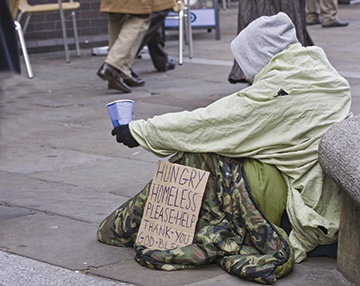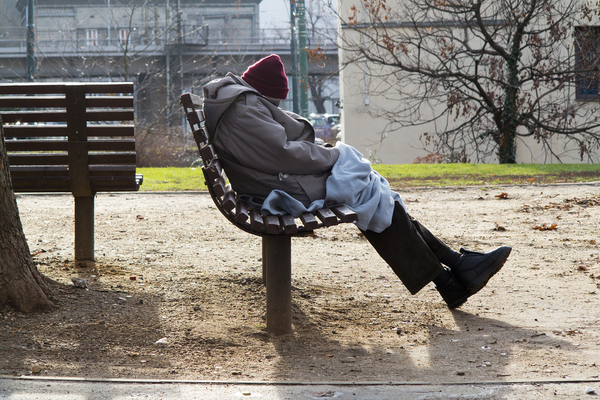You are viewing 1 of your 1 free articles
Growing crisis
Investment is needed to prevent the ongoing increase in homelessness, says Terrie Alafat

A recent visit to family in the US also gave me a chance to catch up with colleagues at Chartered Institute of Housing Canada in Toronto. They are facing many of the same challenges as the UK.
My last visit was many years ago, when I was leading the government’s strategy to reduce homelessness in England. While there, I discovered a church in downtown Toronto which keeps a log on display of all of the people who have died on the streets in that city. It is a sad and disturbing testament of the complete failure of housing and welfare policies to help society’s most vulnerable people.
Back in England, homelessness rose 6% in 2015, and a large majority of councils responding to a Local Government Association survey think they will continue to grow over the next five years.
To add to the evidence of housing stress, rough sleeping rose 30% in 2015, and bed and breakfast use was 20% higher over the year, at any one time affecting 2,600 families with children.
It was therefore hardly surprising that the chancellor announced extra help for homeless people in the Budget, or that the Department for Communities and Local Government is reportedly considering a new statutory obligation on councils to prevent homelessness, akin to the new duty in Wales. Both measures are to be welcomed, but a wider view of what’s driving homelessness and the context for tackling it is needed if any action is to be effective.
A bigger issue
The reasons why people become homeless are complex and overlapping. First, there is the shortage of affordable housing. As the Chartered Institute of Housing has pointed out, landlords have lost 3% of their social rented stock in just three years, and could lose up to 370,000 units by 2020. As the latest UK Housing Review shows, lettings to new tenants are down 8% on what they were in 2010/11. In the private sector, the overwhelming barrier is affordability: new private tenants pay twice the rent that they would in a council letting; on average, tenants pay a worryingly high 28% of their earnings on rents.
Affordability can of course be tackled via access to benefits. More than a quarter of private tenants depend on housing benefit, a proportion which is growing (while in the social sector it’s falling).
However, this also makes them vulnerable to welfare cuts, with benefit sanctions, limits to Local Housing Allowances and the overall benefits cap all having a growing effect - and due to get worse with further welfare changes.
And then there is insecurity, with loss of an assured shorthold tenancy now by far the biggest cause of homelessness, often particularly affecting those who are dependent on benefits.
A further factor not often mentioned is the relationship between people presenting as homeless and their inability to get onto a local waiting list. Inside Housing reported recently on the numbers barred from lists by local connection rules. The UK Housing Review showed that in just two years, London waiting lists have been cut by one-third. Even for those who get onto a list, waiting times are prohibitive in many areas. With other options increasingly restricted, homelessness inevitably increases.
It’s this combination of factors that suggests the government’s response will fall far short of what’s required. Fundamental to tackling homelessness is an increase in affordable supply, but the last Spending Review diverted investment even further away from low-cost renting. In addition, councils’ housing expenditure from their general funds has fallen by 40% since 2010/11. This means fewer staff, fewer advice centres and less money for voluntary agencies working with the homeless.
One indicator of this is the fall in the number of projects and in the number of bed spaces for single homeless people, reported annually by Homeless Link. The impact of limiting supported housing rents to Local Housing Allowance rates, delayed for a year, could also undermine attempts to enforce a new prevention duty - in 2014/15 alone, supported accommodation helped prevent or relieve 16,800 incidences of homelessness.
A new prevention duty, based on one that is already starting to work in Wales, will be welcome and might help to protect services from the planned further cuts in local government spending. But it is only part of the solution if the resource and investment issues are not also addressed. And in the meantime, the factors leading to homelessness are set to get progressively worse.
Terrie Alafat, chief executive, Chartered Institute of Housing








